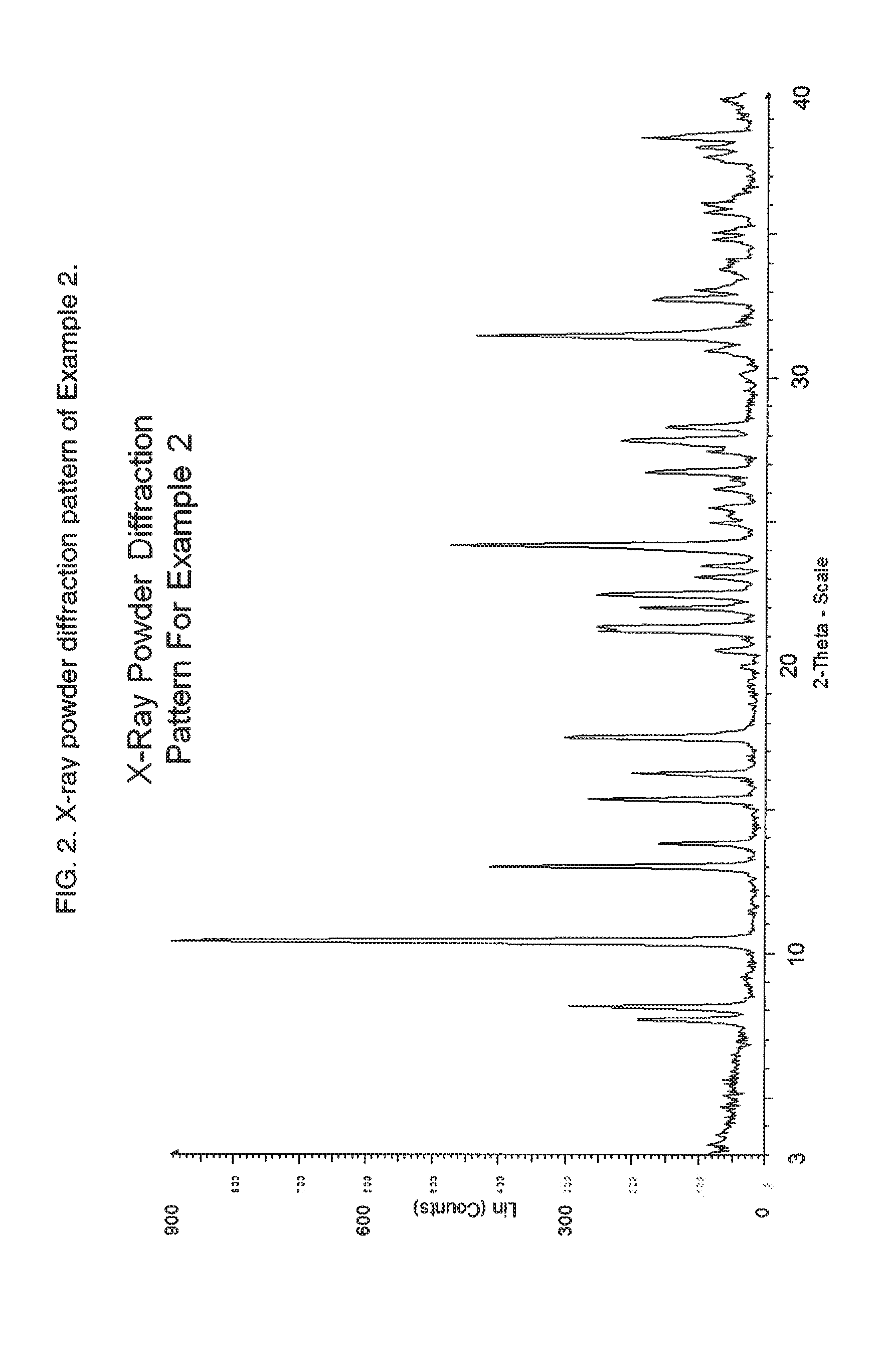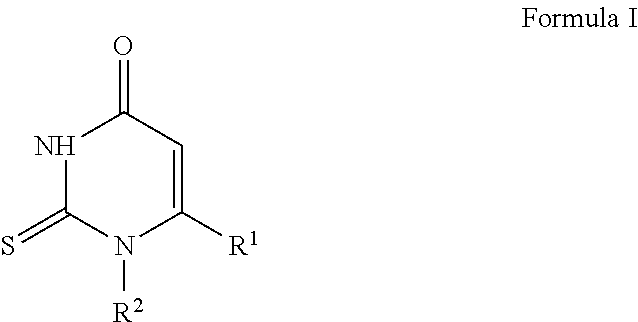2-Thiopyrimidinones
a technology of thiopyrimidinone and pyrimidinone, which is applied in the field of compounds, can solve the problems of reducing the bioavailability of nitric oxide, high mpo levels, and reducing the survival rate of congestive heart failure, and achieves the effect of delayed graft function
- Summary
- Abstract
- Description
- Claims
- Application Information
AI Technical Summary
Benefits of technology
Problems solved by technology
Method used
Image
Examples
preparation 1
[0239]
Ethyl 3-(5-chloro-2-methoxyphenyl)-3-oxopropanoate
[0240]A 3000 mL 3-necked round-bottomed flask flushed with nitrogen was charged with magnesium ethoxide (67.46 g, 589.51 mmoles) and THF (1100 mL), and the resulting mixture was stirred as ethyl hydrogen malonate (162.26 g, 1.18 moles; 145.00 mL diluted in 100 ml of THF) was added and the mixture was heated at 45° C. for 4 hours. Meanwhile, a 2000 mL 3-necked round-bottomed flask flushed with nitrogen was charged with 5-chloro-2-methoxybenzoic acid (100 g, 536 mmoles) and THF (600 mL). To this mixture stirring at room temperature was added 1,1′-carbonyldiimidazole (95.59 g, 589.5 mmoles) in portions to avoid excess foaming. After stirring for 3 hours at room temperature the second solution was added gradually to the first solution. After addition the reaction mixture was heated to 45° C. After 20 hours, the reaction mixture was concentrated under reduced pressure before adding ethyl acetate (1 L) followed by 2 N HCl (500 mL). A...
preparation 2
[0242]
(Z)-Ethyl 3-((2-amino-2-oxoethyl)amino)-3-(5-chloro-2-methoxyphenyl)acrylate
[0243]A 5-L reaction vessel was charged with methanol (3.3 L), sodium methoxide (102.4 g, 1.8 moles), and glycinamide hydrochloride (202 g, 1.8 moles). The mixture was heated at 65° C. for 1 hour before cooling to 50° C. and adding acetic acid (514.25 mmoles, 30.88 g, 29.47 mL) and ethyl 3-(5-chloro-2-methoxyphenyl)-3-oxopropanoate (300 g, 1.03 mole). After heating to reflux for 16 hours, the reaction mixture was stirred as it was cooled to 10° C. After 30 min the resulting solid was collected by vacuum filtration, pulling dry to form a cake that was dried in a vacuum oven (20 mm Hg, 65° C.) for 14 hours to afford the title compound (339.4 g).
[0244]MS (ES+) 313.2 [M+1]+. 1H NMR (500 MHz, DMSO-d6) δ ppm 8.80 (t, J=5.00 Hz, 1H) 7.47 (dd, J=8.90, 2.81 Hz, 1H) 7.27 (br. s., 1H) 7.22 (d, J=2.68 Hz, 1H) 7.14 (d, J=8.78 Hz, 1H) 7.09 (br. s., 1H) 4.30 (s, 1H) 4.03 (q, J=7.07 Hz, 2H) 3.80 (s, 3H) 3.56 (br. s., ...
example 1
Alternative Preparation of Example 1
[0248]
2-(6-(5-Chloro-2-methoxyphenyl)-4-oxo-2-thioxo-3,4-dihydropyrimidin-1(2H)-yl)acetamide
[0249]A slurry of (Z)-ethyl 3-((2-amino-2-oxoethyl)amino)-3-(5-chloro-2-methoxyphenyl)acrylate (20 g, 63 mmol) in a mixture of butyl acetate (140 mL) and DMF (38 mL) was treated with trimethylsilyl isothiocyanate (16.8 g, 125 mmol) and the mixture was heated at 115-120° C. for 5-6 hours. The mixture was cooled to 0-5° C., butyl acetate (100 mL) was added and the mixture was slurried for 8 hours. The formed solids were filtered, and the filter cake was washed with butyl acetate (2×100 mL). The solid was dried in a vacuum oven at 50° C. for 12 hours to a tan solid. The solid was dissolved in a 5:1 mixture of DMF and water at room temperature and additional water was added slowly to crystallize the material. The slurry was cooled to 10° C. and stirred for 8 hours, followed by filtration and washing with water. The filter cake was dried in a vacuum oven at 50° ...
PUM
| Property | Measurement | Unit |
|---|---|---|
| temperature | aaaaa | aaaaa |
| temperature | aaaaa | aaaaa |
| temperature | aaaaa | aaaaa |
Abstract
Description
Claims
Application Information
 Login to View More
Login to View More - Generate Ideas
- Intellectual Property
- Life Sciences
- Materials
- Tech Scout
- Unparalleled Data Quality
- Higher Quality Content
- 60% Fewer Hallucinations
Browse by: Latest US Patents, China's latest patents, Technical Efficacy Thesaurus, Application Domain, Technology Topic, Popular Technical Reports.
© 2025 PatSnap. All rights reserved.Legal|Privacy policy|Modern Slavery Act Transparency Statement|Sitemap|About US| Contact US: help@patsnap.com



